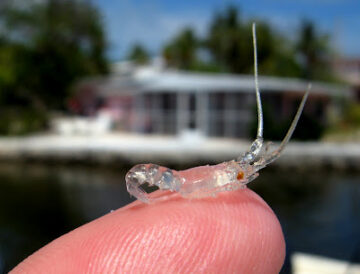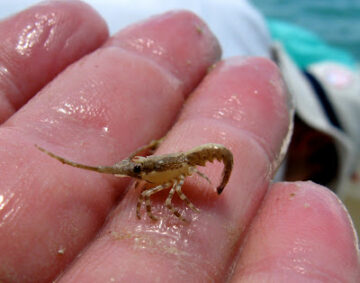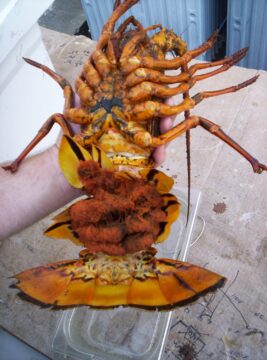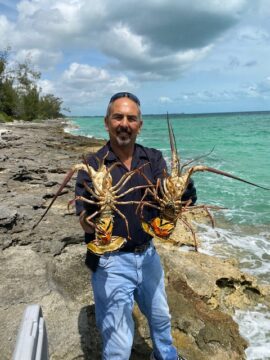At Tropic Seafood, a small percentage of the lobster delivered to our facility arrives as whole live lobster. During the open spiny lobster fishing season from August 1st to March 31st, lobster are put into “live” tanks and kept alive for local sales in Nassau. Depending on how many arrived in any week and were sold to local restaurants, some of the lobster may remain in live tanks for several weeks. The lobster are well cared for during that time and receive a natural diet of several types of fish, shrimp, and squid. They are quite comfortable in our tanks.


So much so, their innate tendency to socialize leads to mating. While in our live tanks, some of the female lobster produce eggs which are fertilized by male lobster (when they place a spermatozoa pack on the abdominal side ofthe female lobster). When the female lobster puts out eggs, she scratches that packet and sperm is released which fertilizes the eggs. Next the female lobster carries those eggs on her abdomen in a cluster, on her swimmerets (the fins on the abdominal side of her tail).


At Tropic Seafood, we are all about giving back and caring for our resources and the environment here in the Bahamas. When we see that several of the female lobster have produced egg clusters (the actual term is “Berried” Females), we gather them up, put them into a cooler and return the female lobster to the sea, before the eggs begin to hatch.
Since the lobster has only been in our live tanks for a few weeks and have been eating a regular seafood diet, they readily acclimate back to their natural environment within minutes.
A female spiny lobster that is 4-5 years old and weighs about two pounds will produce about one million eggs at a time. Seems like a lot of eggs! In nature, only a fraction of one percent of those will survive through their lengthy and delicate larval cycle which can last from six months to a year, while they go through eleven different larval stages. Their last stage is called a Puerulus of Phylosoma. In that stage, they look just like a baby lobster, but they are totally clear (transparent). Within seven days of becoming a Puerulus, they begin to pigment (put on color) and molt into a baby lobster. Their transparent Puerulus larval stage is obviously an anti-predator defense mechanism, which makes it difficult for predators to see them in the water column.
This year the team at Tropic Seafood, released over 85 berried female lobsters which means that over 85 million eggs were put pack into the sea to help replenish the population of spiny lobster in The Bahamas.
The berried female release activity is a yearly event for Tropic Seafood, and it is our way of “giving back” to the sea and the natural environment to help make sure there is always plenty of lobster in the Bahamas.

